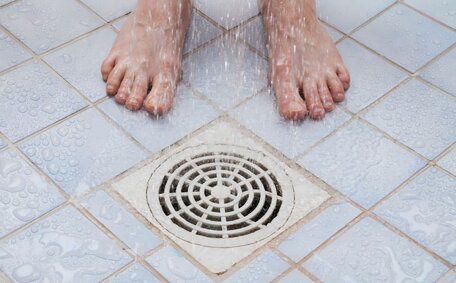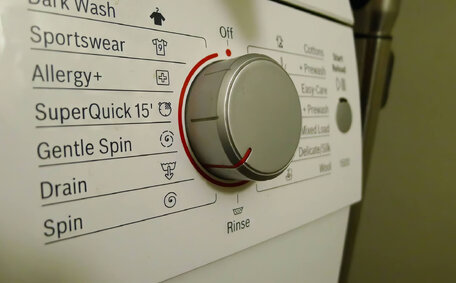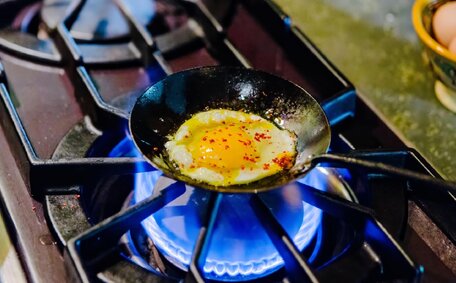
Baking Soda & Vinegar for Cleaning
Using baking soda & vinegar separately for cleaning is very effective; but mixing them dilutes their cleaning power. Learn how to use them properly.
Read MoreAn efficiently maintained gas water heater reduces energy usage and cuts down on utility bills, providing financial savings for Australian homes. Since hot water typically represents 23% of household energy costs, enhancing your system’s efficiency can lead to significant financial savings.
Recalibrating and maintaining your storage water heater for energy efficient operation involves adjustments like insulating pipes, setting appropriate temperatures, flushing sediments, and adopting superior fixtures, which concurrently hinder the growth legionella bacteria. Improving your system’s ability to maintain optimal hot water temperatures results in faster heating times and reduced energy consumption.
This guide offers actionable advice on maximising your hot water system’s efficiency through precise recalibration techniques. Implementing DIY modifications or engaging professional services for a new hot water unit, be it a storage tank or a heat pump, enhances performance.
Comprehending the various parts of your hot water tank is critical for ensuring its efficient operation and extended lifespan. Typically, hot water systems consist of a few key components: the water tank, heating element or burner, thermostat, and pressure relief valve, all influencing the cost your household incurs.
The tank stores water, thus determining the water stored that’s either heated directly by an electric element or gas burner, or indirectly via a heat exchanger in a heat pump system.Electric elements and gas burners generate the energy required to heat water efficiently in the tank.
A thermostat enables you to reset your hot water temperature, and the pressure relief valve ensures no excess pressure builds up.
These components, combined with an accurately set water heater temperature, collaborate to ensure a consistent hot water supply. Routine checks, such as verifying the pressure relief valve and evaluating the anode rod, can lead to both energy savings and trust in your water heater’s enduring efficiency. Bear in mind that water heaters represent approximately 25% of a home’s energy expenses, making optimal system performance essential.
Read the current setting and adjust it down by 5-10 degrees Celsius if it’s set too high, specifically higher than 60°C. Turning down the thermostat on your electric hot water system even a small amount can make a meaningful difference - lowering by just 5°C could reduce your energy bills by 10-15%.
Locate the thermostat on your gas hot water or your electric and gas water storage heater to potentially minimise the energy utilised. The thermostat regulates the temperature of your electric hot water heater, maintaining the water at a temperature to make feel at ease in your abode. It may be behind an access panel or on the outside of the tank, regulating the amount water your system uses.
For your gas hot water system, turn the control knob fully to adjust the hot water setting to a mid-range on your continuous flow water heater to improve efficiency. And for heat pumps, adjust via digital controls to manage water temperatures effectively, aiming for the 55-60 degrees range. These minor temperature tweaks can also minimise wasted standby energy, guaranteeing the hot water you require remains readily available.
Besides temperature, also check that sensor probes are fully immersed in the tank water on storage heaters.
Verify that inlet valves are operational and ensure your gas line is functioning properly to maintain correct water pressure. Confirm the power supply, checking the circuit breaker, or gas is connected. It’s essential to familiarise with the process to check relight the pilot flame if it’s unreliable, as faulty probes or valves disrupt the system’s efficiency.
Recalibrating temperature and examining components in gas electric systems can substantially reduce the amount energy used, enhancing their efficiency; peruse the section below how for further guidance. But for more nuanced insights, particularly when facing an absence of hot water, see section below for how a licenced professional can elevate your system’s performance. Qualified technicians can help inspect your system thoroughly, troubleshoot issues effectively, and recommend efficiency upgrades if needed.
Wrapping your hot water pipes in quality insulation supports retention of all hot water temperatures, significantly boosting both energy efficiency and system effectiveness. The right insulation will reduce the amount of heat lost from hot water as it travels through uninsulated pipes. This heat loss wastes energy.
By wrapping pipe insulation around both the cold inlet and hot water outlet pipes, you stem this heat loss, reducing the water volume more that needs to reheat and ensuring the heated water can remain consistently warm. An insulative barrier guarantees you receive hot water attuned to your needs, preserving thermal energy within the pipeline. Reducing the degrees of heat shed before water reaches the taps in your house saves electricity otherwise spent re-heating more cold water.
For precise insulation needs, your plumber can recommend foam tubing or rubber sleeve products. Carefully measure pipe length and cut insulation pieces to size. Carefully measure pipe length and cut insulation pieces to size.
Ensure you get insulation with the right diameter to snugly fit your pipes.
For best energy saving results, your trusted local licensed plumber can ensure your heater receives a professional installation. They can ensure complete coverage of all exposed pipework without constricting valves. Professionals also use high quality commercial insulation that tolerates moisture and withstands temperatures up to 220°C.
The small effort to adjust hot water pipe insulation can influence your water usage, cutting yearly energy bills by up to 25%. That saving is amplified on your energy bill if you combine pipe insulation with lowering your water heater’s thermostat and installing water efficient tapware.
Steady maintenance of your hot water system maintains efficiency and durability, supplying water at a pleasant temperature without it becoming too hot. Periodic draining of your storage tank to remove accumulated mineral sediment is a vital maintenance task that can lead to cost savings.
Every few months, conduct a hot water system check-up by attaching a garden hose to the tank’s bottom-positioned drain valve, which can save on maintenance expenses. Sediment buildup can cause poor heat transfer, compelling the heating element to expend more energy, thus wasting it. Open the valve and allow the water to flow out for 5-10 minutes to flush out sediments, ensuring a thorough cleansing.
Gather the purged contents in a bucket over period, laying some towels to circumvent any spillages.
Also inspect plumbing fittings, anodes, and the control valve during maintenance. Inspect the thermostat, heating elements, valves, and insulation for any faults. They can test components like the pressure relief valve, clean parts and how check meticulously for leaks.
Regular maintenance to eliminate sediment and examine components ensures your system operates cleanly and efficiently. Storage water heaters, being the most common type, last 8-12 years with proper care, saving you money over time.
Transitioning to water-saving appliances, such as efficient your shower heads and faucet aerators, is an impactful strategy to boost hot water efficiency. Old showerheads, which dispense water too liberally, can be replaced with efficient models maxing out at 9 litres without compromising water pressure.
Low flow tap aerators introduce air bubbles to maintain wetness while using 30% less water. Reducing water usage in electric hot water systems, which are susceptible to sediment accumulation, can lengthen the time between required flushing.
When upgrading fixtures, choose Water Efficiency Labelling Scheme (WELS) rated products, which guarantee significant reductions in the amount of water used, are advisable.
Installing water-saving fixtures decreases the volume of water heated, thereby reducing the workload on your system. Improved water pressure and extended hot water system life will be beneficial for your household.
Seeking the expertise of a licensed plumber professional is advisable when you’re faced with complex issues or need significant repairs to your hot water system. Specialists possess the expertise to correctly identify and safely resolve problems, boosting system efficiency.
Situations that warrant a no hot water call for professional assessment of what your water heater can improve include:
Avoid attempting major repairs without proper training to prevent the risk of scalds, electrocution, or gas leaks; professionals are trained to take the necessary precautions.
They also have specialised equipment to conduct thorough inspections and pinpoint underlying causes of issues. This avoids wasting money on misguided DIY solutions. Experts can offer plumber professional advice, fully recondition systems, or recommend appropriate upgrades for greater efficiency.
To maximise electric water system performance, safety, and cost-efficiency, it’s crucial to enlist a licensed plumber for complex maintenance or repairs. They deliver quality outcomes tailored to your household’s needs.
An efficiently performing your hot water heater that can provide ample heated water while consuming less energy is a win for both household comfort and cost savings. We outlined practical methods to recalibrate and enhance your hot water heater, ensuring continuous comfort and efficiency for your lifestyle.
Simple DIY tweaks like adjusting temperature settings, insulating pipes, preventing your system from running out of hot water, and upgrading fixtures can make your hot water system more energy-efficient and reduce bills. Combine these with professional maintenance routines for optimal efficiency.
For complex repairs or replacements, especially when there’s a hot water call due to no hot water, leverage the expertise of licenced technicians like those at Lilyfield Plumbing. Specialists can accurately audit systems, troubleshoot issues and advise on appropriate upgrades to maximise efficiency.
Proactively maintaining your hot water unit helps get your water call supply constant, preventing running out hot water, saving money long-term, and lets you contact your plumber for regular check-ups to sustain comfort levels. Contact the team at Lilyfield Plumbing on 1300 349 338 for customised consultations on wringing better efficiency from your system.
Using baking soda & vinegar separately for cleaning is very effective; but mixing them dilutes their cleaning power. Learn how to use them properly.
Read MoreBlocked drains are usually caused by buildup of hair, grease, debris and more in your pipes. Fix the problem with professional drain unblocking services to get your drains flowing freely again. Contact us for affordable drain unblocking.
Read MoreWhen you suspect a gas leak or damaged gas line, contact a licensed gas fitter immediately to locate and repair it. A gas line repair involves sealing leaks, replacing corroded or damaged pipes and testing all connections for safety before restoring gas supply.
Read MoreLilyfield, 2040 NSW
We will call back as soon as possible.




